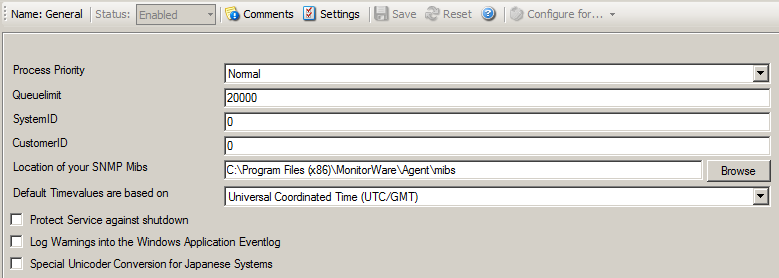The General Options available on this form are explained below:

Figure1: General Options
Process Priority
Configurable Process Priority to fine-tune application behavior.
Queue Limit
The applications keeps an in-memory buffer where events received but not yet processed are stored. This allows the product to handle large message bursts. During such burst, the event is received and placed in the in-memory queue. The processing of the queue (via rule sets) itself is de-coupled from the process of receiving. During traffic bursts, the queue size increases, causing additional memory to be allocated. At the end of the burst, the queue size decreases and the memory is freed again.
Using the queue limit, you can limit that maximum number of events that can be in the queue at any given time. Once the limit is reached, no further enqueueing is possible. In this case, an old event must first be processed. In such situations, incoming events might be lost (depending on the rate they come in at). A high value for the queue size limit (e.g. 200,000) is recommended, because of the risk of message loss. It is also possible to place no limit on the queue. Use the value zero (0) for this case. In this case, the queue size is only limited by virtual memory available. However, we do not recommend this configuration as it might cause the product to use up all available system memory, which in turn could lead to a system failure.
SystemID is of type integer to be used by our customer. In addition, it is user configurable.
CustomerID is of type integer provided for customer ease. For example if someone monitors his customer's server, he can put in different CustomerIDs into each of the clients. Let us say someone monitors servers A and B. A has 5 servers all of them with CustomerID = 1 and B has 2 servers all of them with CustomerID = 2. Both A and B happen to have a server named "SERVER". Together with the customerID, these machines are now uniquely identifiable. This is user configurable.
Location of your MIBS
Click the Browse button to search for your MIBS location or enter the path manually.